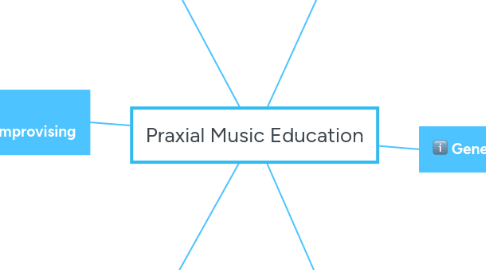Praxial Music Education
da Maria Menendez


1. Understanding Musical Understanding
1.1. To begin with one must understand the terms "understanding" and "music education".
1.2. Meanings are gained through experiences of cultural participation and communication. The more representations of something leads to deeper understanding.
1.3. Music can not be seen as an object according to praxial thinking and has a big connection with language acquisition.
1.4. Reflection as we perform ,rather than after, has a role in our understanding of music better.
2. General Music
2.1. Applications of the praxial philosophy can enhance the quality of general music programs.
2.2. General music is meant to include students of various backgrounds and range from students with no experience to students with a musical background.
2.3. Personal involvement in music learning is what connects students and teachers more to music.
2.4. Musicianship is what will ensure that the aims and values of music education are reached.
2.5. The understanding of dialogue between knowledge and musical activity and how that occurs within the social context of musical experiences is important.
3. Bodily Experiences/Listening/Composing/Improvising
3.1. Music takes place in the body but can also take the body to a different consciousness and transformations.
3.1.1. Project specifications
3.1.2. End User requirements
3.1.3. Action points sign-off
3.2. Musical listening and practice both must exist.
3.2.1. Top Priorities
3.2.2. Medium Priorities
3.2.3. Low Priorities
3.3. Composing must not be taken lightly and does not need to be created from a gifted individual, rather an individual who makes calculated decisions.
3.3.1. Top Priorities
3.3.2. Medium Priorities
3.3.3. Low Priorities
3.4. Teachers who study praxial music should be able to teach composition much better through careful understanding.
3.4.1. Top Priorities
3.4.2. Medium Priorities
3.4.3. Low Priorities
4. Building Cultures and Practices
4.1. Music teaches essential life values such as personal growth, differentiation, complexity, self-esteem and happiness.
4.1.1. Materials
4.1.2. Personnel
4.1.3. Services
4.1.4. Duration

